Banana Halwa or Banana Fudge is a traditional and classic, chewy, and flourless sweet recipe prepared using four ingredients from your kitchen. One of the best recipe to try if you have overripe bananas at home.
This recipe is also known as Mangalore Banana halwa or Kerala style Nenthra pazham halwa. In konkani we call it kele halvo. The banana halwa's color, taste, and texture varies depending on the type of banana used and how ripe it is, and whether sugar or jaggery is used in the recipe. The overripe bananas are the ones that will give you the best results.
Note Banana Halwa is prepared without using any milk or flour (e.g., wheat flour, semolina, or sooji rava). Therefore, this recipe is totally different from other halwa varieties popular in Maharastra or any other part of the country.
I have tried this banana halwa with the long bananas you get in USA, Nendra Banana (Plantain) from Karnataka or Changalikodan Nendran Banana from Kerala, and also using banana with red-colored skin. Irrespective of the banana variety, the preparation procedure is the same; only the texture and the color of the halwa will vary.
WHAT IS HALWA or HALVA?
Halwa (Halva), also known as aluva, halua is an easy and delicious, popular sweet treat from Indian, Asian, and Middle Eastern cuisine. Halva is usually prepared using semolina (sooji or suji), wheat flour, grains, or nuts. But these days you see a lot of variations prepared using fresh fruits and vegetables that are in season.
If you haven't checked, here is a simple APPLE HALWA OR PUDDING recipe to try this fall when apples are in peak season or GAJAR HALWA OR CARROT HALWA recipe during winter when carrots are available in plenty.
Coming back to banana halwa...
The ingredients in the recipe are very flexible. You adjust the sugar to taste depending on the sweetness of the banana. A very important step or key while making this sweet is continuous sauteing. You will have to saute for 15 minutes + 20 to 25 minutes that is a total of 40 minutes of constant stirring. But it is worth a try.
Halwa is served during festivals like Diwali, Navratri, Raksha Bandhan or during special occasions, along with namkeens and a cup of coffee or tea. It is also given in the form of a mithai box or as a gift box during festivals. In the Mangalore-Udupi region, banana halwa is served with breakfast/lunch during weddings. Some also prefer to have banana halwa with a cup of hot milk as a mid-day snack or post-meal dessert.
You can also make this during fasting, vrat, upvas days like Karwa Chauth, Ekadashi, Varamahalakshi vratam, Shravan Somvar, Sai Guruvar, Navratri, or Shivratri.
Also, this is one of the best recipes to try using overripe bananas instead of baking banana bread or muffins.
And sorry for the bad video quality today. It was shot using one hand while the other was busy sauteing bananas.
Ingredients for Banana Halwa
6 Long overripe Bananas
¼ cup Ghee
½ cup Sugar
¼ cup Cashews
¼ teaspoon Cardamom powder (optional)
How to make Banana Halwa (Mangalore or Kerala Style)
In a blender, add bananas and blend them to a smooth paste. Blending gives a smoother consistency to your halwa. You can also mash the bananas instead of blending if you desire a chunky halwa.
Add ghee and pureed banana in a pan and continuously stir on medium-low flame for about 15 minutes. The banana will be cook during this process, and the mixture slowly starts changing its color.
At this point, add sugar based on the sweetness of banana, cashews and continue to stir. The color and texture of halwa changes during this process. Check my video for more details.
Around 25 minutes mark, i.e., after adding sugar, the mixture becomes thick, sticky, and leaves the sides of the pan. Switch off the flame.
Transfer this to a greased plate or plate lined with parchment paper and spread the halwa to desired thickness.
Once it cools down completely, cut them into desired size and shape. Serve and enjoy.
Tips
- Please use my timing as a guide. The time it takes you to reach each stage will vary depending on the type of banana, the intensity of the flame, and the pan used to make the sweet recipe.
- Vary the amount of sugar depending on the sweetness of the bananas.
Use ripe to overripe banana for best results. - Use any variety of bananas but see that it's overripe. Long bananas (plantain) tastes the best.
- Except for the last banana that I show in the video, all the bananas that I use are overripe with skin completely black in color 🙂 I had no plans of clicking videos until I started adding the last one. Having said that, don't use rotten bananas. You can taste overripe bananas before adding them to the recipe. There is a difference guys 🙂
What is the texture of banana halwa?
Banana mixed with sugar, ghee, and nuts, sauteed for more than 15 minutes tastes excellent anyway. The time at which you switch off the flame matters for the consistency and texture. If you switch off the flame earlier, you will get a soft halwa, like sheera or sooji halwa. You will have to end up eating with a spoon, but it still tastes great.
For typical Mangalorean style, fudgy store-bought halwa texture like the one in image below, cook the banana mixture till it becomes thick, sticky, and leaves the sides of the pan. For candy or toffee-like texture, cook for few more minutes till it's hard to stir anymore.
How to store banana halwa?
Banana halwa is one of the best make-ahead desserts. You can store it in an air-tight conatiner for up to 7 days at room temperature.
IF YOU LIKE INDIAN FOOD AND RECIPES, THEN CHECK SOME OF THE POPULAR RECIPES FROM INDIAN CUISINE ON MY BLOG
- BEST INDIAN SWEETS AND DESSERTS
- DIWALI SWEETS RECIPES
- DIWALI SNACKS RECIPES
- FASTING, VRAT, UPVAS RECIPES
- POPULAR & EASY BURFI RECIPES
Video recipe for flourless banana fudge or banana halwa
Detailed recipe for BANANA HALWA (KERALA OR MANGALORE STYLE)
Recipe card

Banana Halwa | How To Make Banana Halwa (Kerala And Mangalore Style)
Ingredients
- 6 Bananas , Long overripe , preferably nendra banana
- ¼ cup Ghee or Brown butter
- ½ cup Sugar (adjust to taste)
- ¼ cup Cashews , chopped
- ¼ teaspoon Cardamom powder
Instructions
- In a blender, add bananas and blend them to a smooth paste. Blending gives a smoother consistency to your halwa. You can also mash the bananas instead of blending if you desire a chunky halwa.6 Bananas
- Add ghee and pureed banana (from above) in a pan and continuously stir on medium-low flame for about 15 minutes. The banana will be cook during this process, and the mixture slowly starts changing its color.¼ cup Ghee
- At this point, add sugar based on the sweetness of banana, cashews and continue to stir. The color and texture of halwa changes during this process. Check my video for more details.½ cup Sugar, ¼ cup Cashews
- Around 25 minutes mark, i.e., after adding sugar, the mixture becomes thick, sticky, and leaves the sides of the pan. Switch off the flame.
- Transfer this to a greased plate or plate lined with parchment paper and spread the halwa to desired thickness.
- Once it cools down completely, cut them into desired size and shape. Serve and enjoy.
Notes
- read the post above to know the right consistency of halwa.
- Please use my timing as a guide. The time it takes you to reach each stage will vary depending on the type of banana, the intensity of the flame, and the pan used to make the sweet recipe.
- Vary the amount of sugar depending on the sweetness of the bananas.
- Use any variety of bananas but see that it’s overripe. Long bananas (plantain) tastes the best.
- Use ripe to overripe banana for best results. Except for the last banana that I show in the video, all the bananas that I use are overripe with skin completely black in color 🙂 I had no plans of clicking videos until I started adding the last one. Having said that, don’t use rotten bananas. You can taste overripe bananas before adding them to the recipe. There is a difference guys 🙂
Nutrition
***Click below to save it on Pinterest***

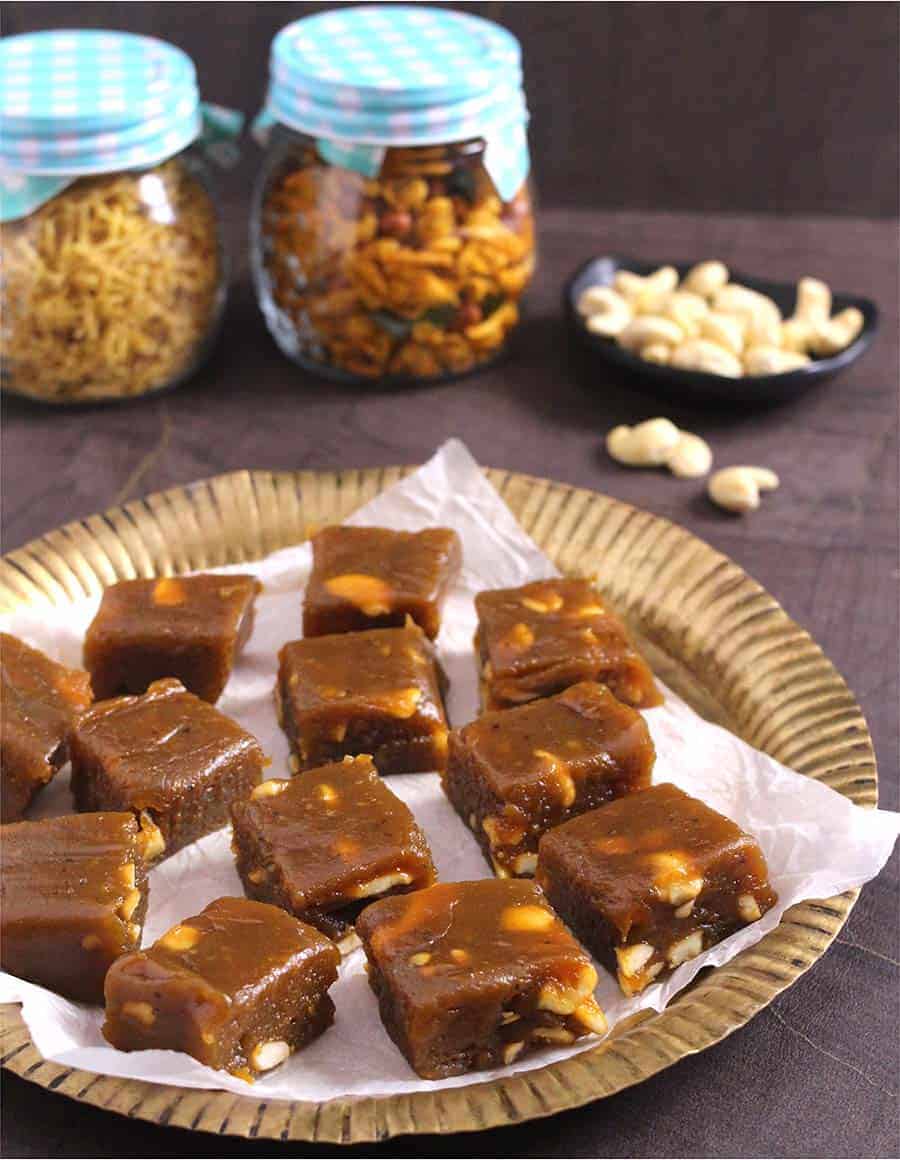
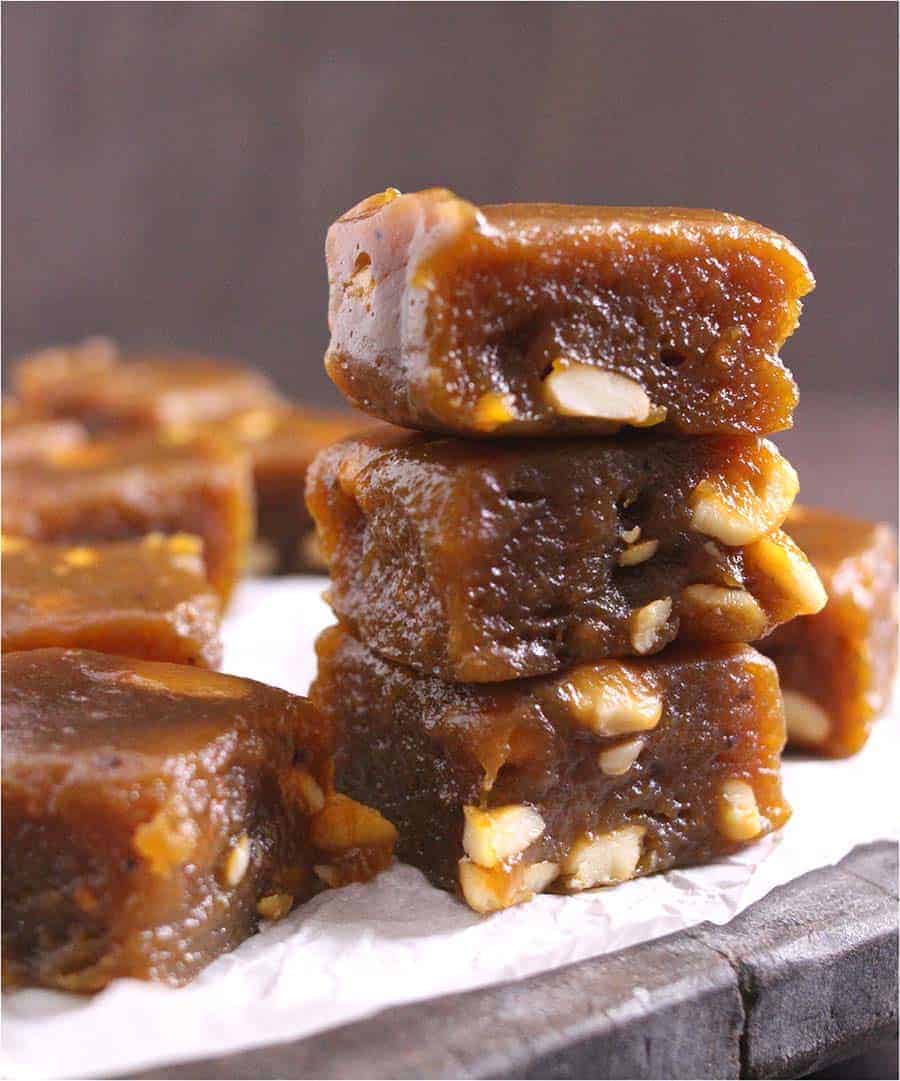
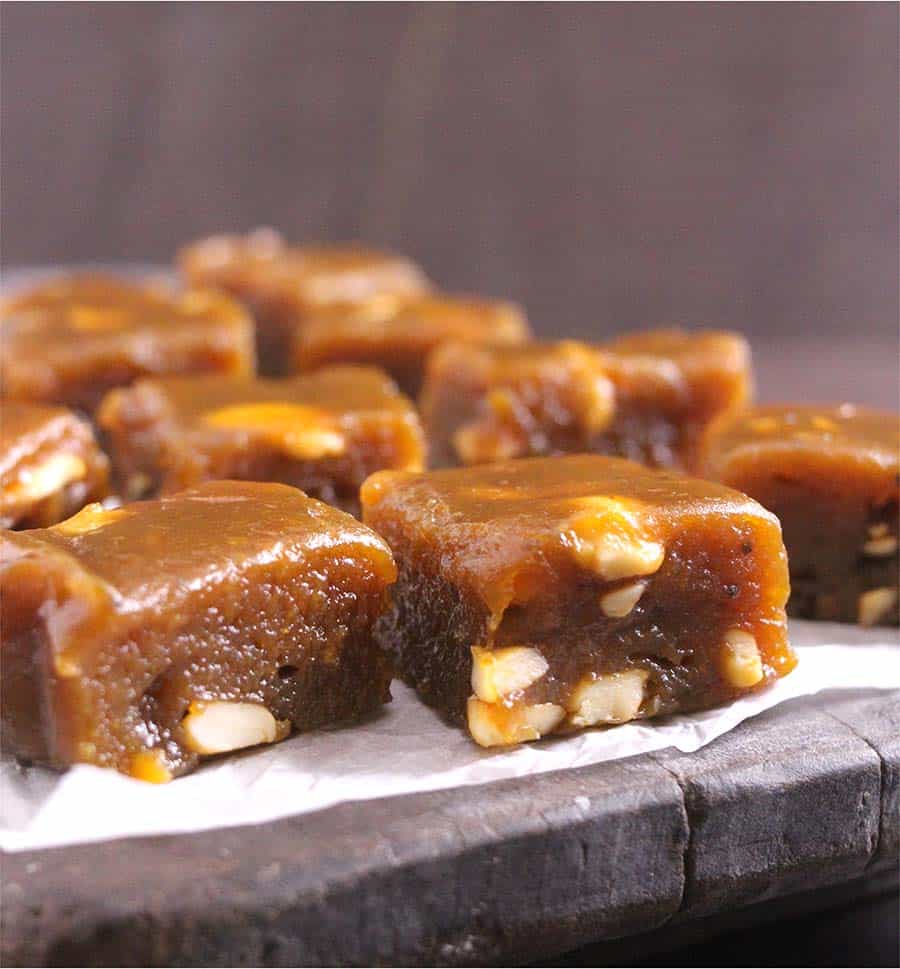
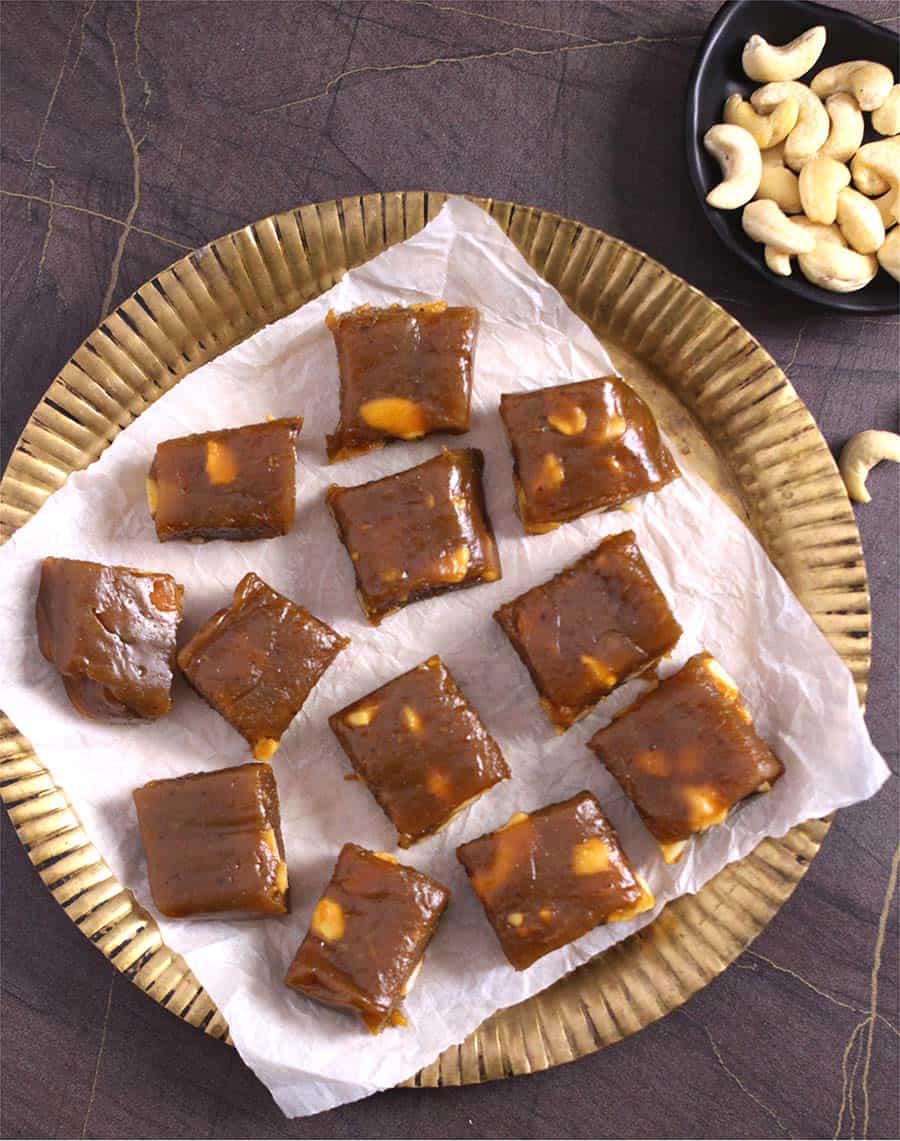
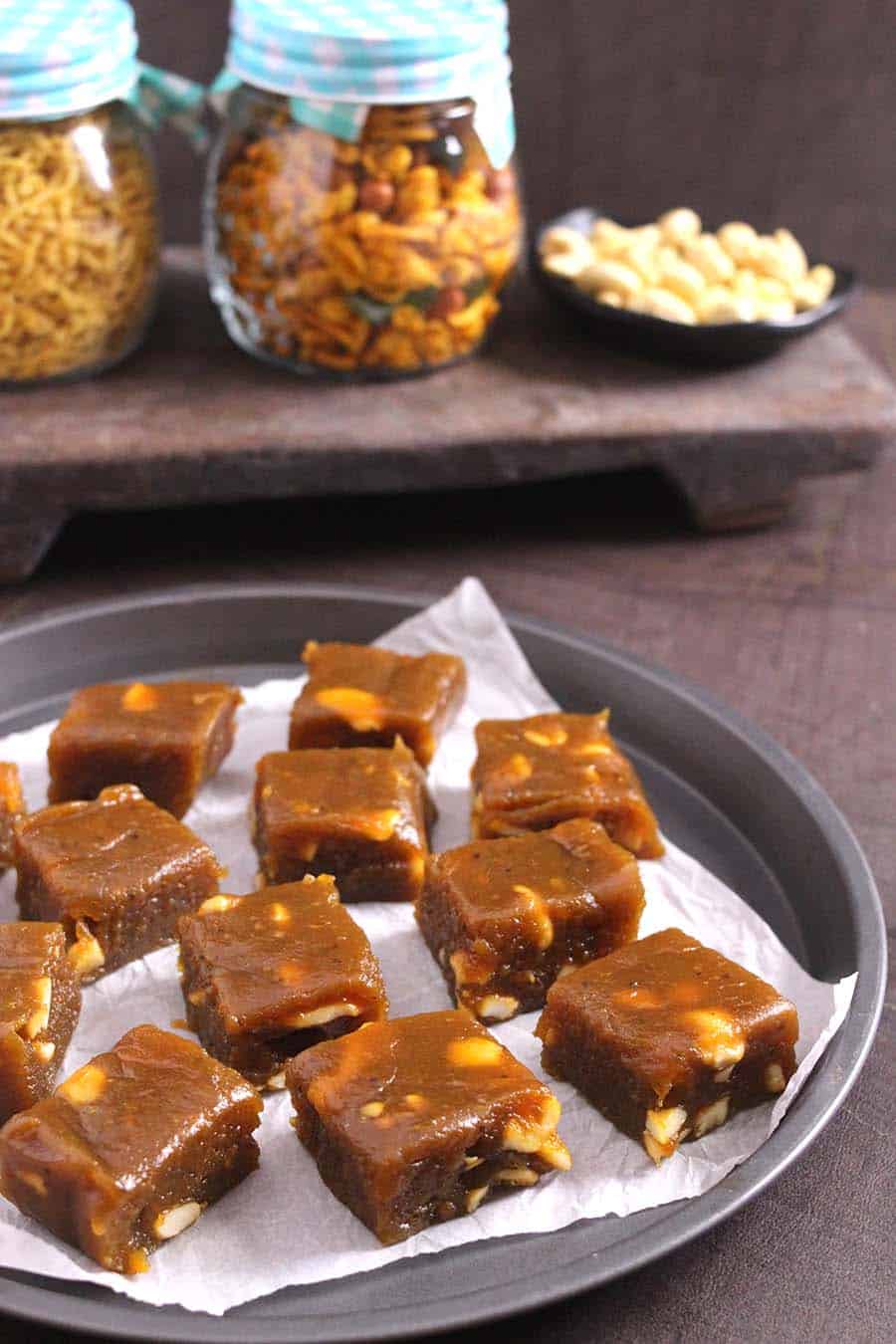

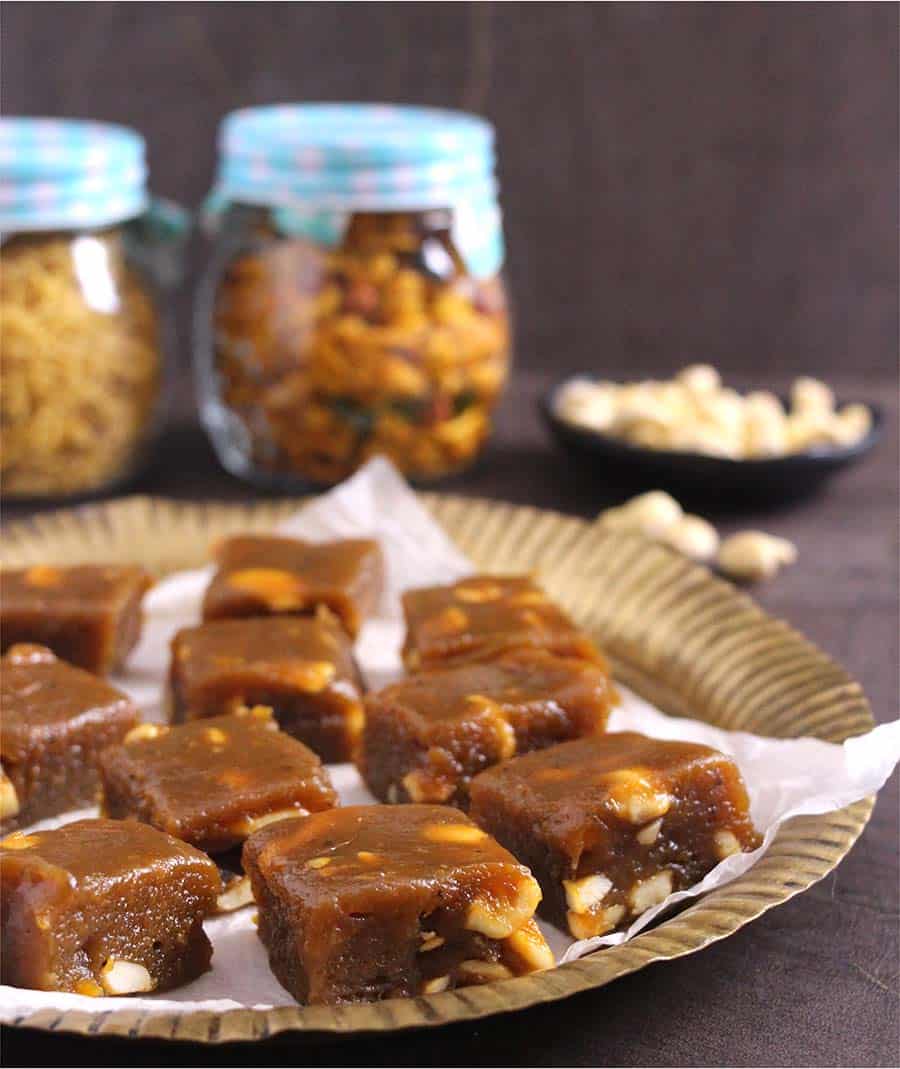


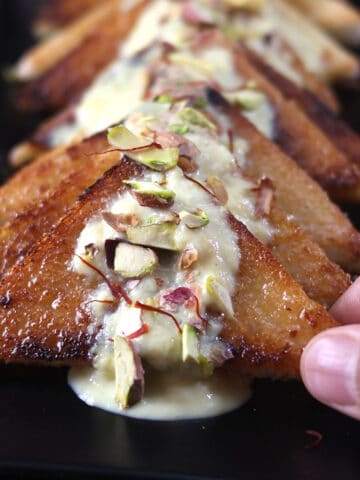

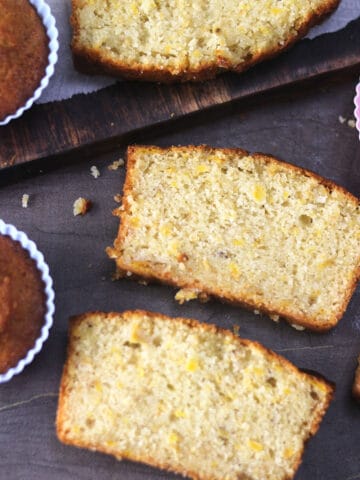
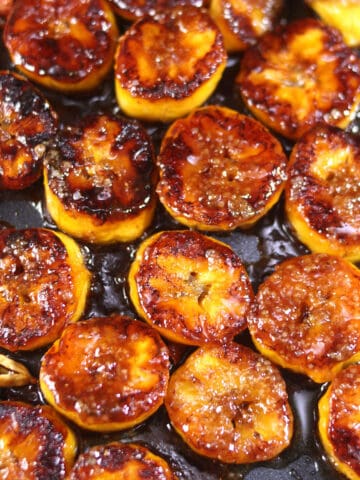
Cara
Great flavor! I cooked as directed and The texture and flavor was great but my color was grey and not brown. Could you please give any suggestions as to what I did wrong?
Thanks for the great recipe for older bananas
Kushi
The color depends on the type of banana used. Some bananas will give a grey color at the end. Hope this helps 🙂
Mechelle
Hi. What ghee did you use? Vegetable or cow ghee?
Kushi
Cow ghee.